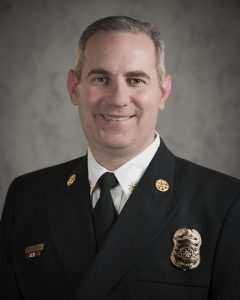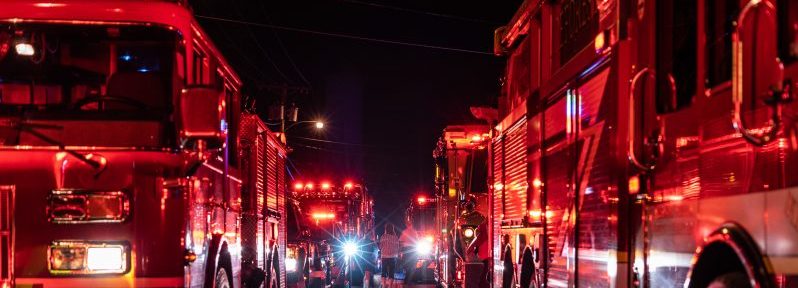Henderson, Nevada’s Fire Department does not only extinguish fires – the agency also handles the city’s other emergency services. Whether it is providing ambulances, rescuing lost hikers or retrieving hazardous materials, department employees have full plates. And with 11 stations spread across the Las Vegas Valley, Henderson’s Fire Department must always communicate clearly and decisively.
In January 2020, the department rolled out a virtual collaboration tool agencywide. Presently, this application permits Henderson’s firefighters to connect anywhere inside the city’s approximately 106 square miles.
GovLoop spoke with Deputy Fire Chief Scott Vivier about how virtual collaboration augments his agency’s performance and safety while handling about 30,000 calls annually.
The interview below has been lightly edited for brevity and clarity.
GOVLOOP: How has COVID-19 changed how Henderson approaches collaborating, training and working virtually?

Henderson, Nevada Deputy Fire Chief Scott Vivier
VIVIER: We service the second largest city in Nevada. It is an all hazards department. Fire departments are unique because they operate 24 hours a day, seven days a week.
The pandemic has highlighted the need to put certain safety precautions in place. We were fortunate to have begun a journey several years ago to become a smart city. And one of the technologies we found prior to this pandemic was a hardware/software solution. We were able to instantly communicate with our fire stations and our crews with the push of a button. It sped up our ability to share critical information.
We need to give up-to-date information to our crews. A lot of times we respond to an emergency and there are immediate lessons learned. In the past, our battalion teams would have to drive to every single station. Or they would have to have their units leave their fire stations for a centralized location. Having this technology allows us to stay connected.
What advantages have virtual tools given your department?
Our training doesn’t always happen from eight to five. But training has been fantastic with it. It is great having classes where you can interact in real time. We have a lot of staff working from home like everywhere else. With our platform, the instructor can see all the students looking back at him. It is easy to use and all built in. The platform is extremely flexible. That was something we didn’t know going in. If you must enter passwords and logins and it takes four clicks, firemen are going to take an axe to it.
How do we communicate with all the stations in real time? Now, our members can download the application to whatever smart device they have. That device can become a live camera that can broadcast two-way information. It integrated into our drone program. We were trying to figure out how to get video from the drone pilot to the command post. We didn’t know how simple the application was. That was the first thing we really liked. It was a hardware/software solution that worked as advertised.
Your agency is now using its virtual tools to share information – such as building floor plans – between drones, employees and stations.
How else is your department leveraging virtual tools for its unique responsibilities?
Nothing in the fire service happens alone. We’re highly dependent on connectivity. In emergency services, simple is better. There are lots of solutions out there. While technically very sophisticated for the user, this application is very simple.
When you picture a house fire, picture a box. Our job is to cover all seven sides of the box. Obviously, it is not possible to see all seven sides at once (note: the seven sides are the box’s four sides, the top, the bottom and the inside). Someone would have to physically position themselves on all the sides of the box to provide real-time information about what was happening.
From a bird’s eye view using a drone, you can see up to five sides of the building at once. If there are dangers on the roof – solar panels, air conditioning units – it can give us real-time insights about people inside the building. All that information gets fed back into that technology. It is helping keep us safer and more effective.
Drones can also easily locate people. Henderson has over 180 miles of trails to maintain. Unfortunately, people don’t always make good decisions on the trails or get stuck. Part of rescuing them is finding them. We have had several successful rescues where the drones found the people before we did.
We think the future is bright. The advances in technology are going to allow us to become more efficient and serve the public more effectively. Other stations don’t have all the audio and video capabilities we have at our stations. We feel very blessed.





Leave a Reply
You must be logged in to post a comment.